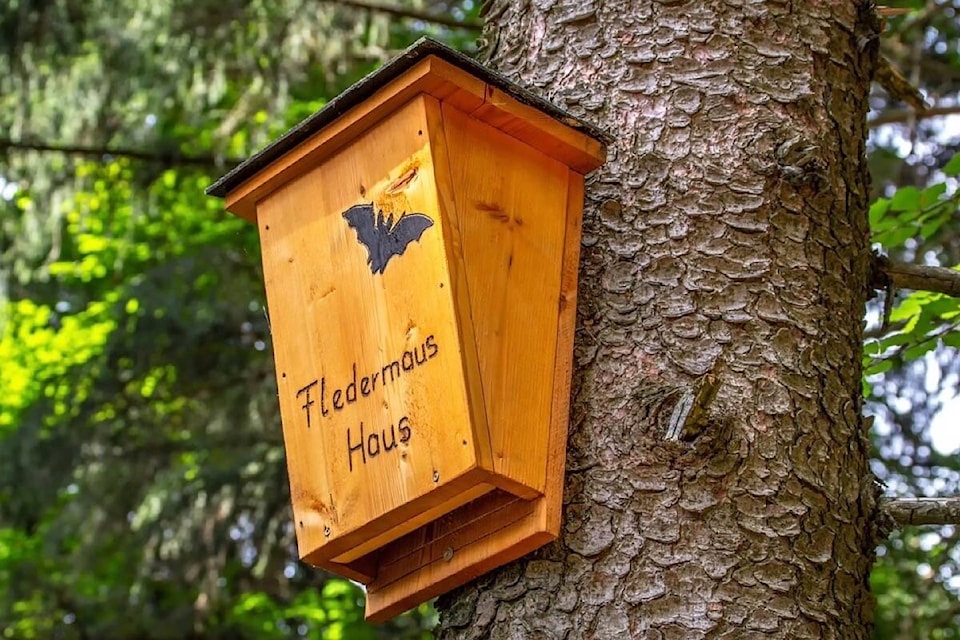Halloween is drawing near, and with it comes images of scary bats flitting across a moonlit sky. They’ve become a shorthand for the eerie and ominous, so this is the perfect time of year to battle some bat myths, learn more about these amazing animals, and perhaps even do something to help them.
Fittingly, this year International Bat Week starts on Oct. 24 and ends on Halloween itself, Oct. 31. The week is all about appreciating bats and their many benefits, which include eating insects (such as mosquitoes), pollinating flowers, and spreading seeds and nutrients.
You can take a few minutes to learn about the many ways bats contribute to our lives, and what you can do locally for bats, at www.batweek.org or through the BC Community Bat Program at www.bcbats.ca. Research bats online, or watch bats via a bat cam, like the ones at https://batworld.org/bat-cams/. Restore some bat habitat, learn about bat-friendly community initiatives, clean and maintain your bat box for next spring (or build a bat box if you don’t have one): there are many ways to participate and support bats.
“Bats in B.C. help control agricultural and forest pests, as well as mosquitoes in our yards, but now bats need our help,” says Mandy Kellner, Coordinator for the BC Community Bat Program. “The conservation of bats in B.C. has always been important, since over half the species in this province are considered at risk. With the continuing spread of White-nose Syndrome in Washington State, bat conservation is more important than ever, as we expect to see impacts in B.C. in the near future. ”
Ironically, it’s around Halloween when bats disappear from our northern neighbourhoods, not re-emerging until the return of warmer weather in spring. Since they are insect-eaters, our B.C. bats must leave their summer roost sites and either migrate or hibernate in order to survive the winter. Their absence means it’s the perfect time to do home renovations that you might have delayed due to the presence of bats. You can clean out and repair a bat box, or do bat-friendly exclusion work, without disturbing or injuring bats.
If you do see a bat in winter, please report it. Monitoring for White-nose syndrome in B.C. will continue this winter, with Community Bat Programs requesting reports of dead bats or sightings of winter bat activity.
The BC Community Bat Program provides information about bats and promotes local stewardship and citizen science. You can report winter bat sightings, and find out more about the program, BatWeek activities, and options for helping local bat populations, at www.bcbats.ca, by emailing info@bcbats.ca, or by calling 1-855-922-2287.
editorial@accjournal.ca
Like us on Facebook and follow us on Twitter
